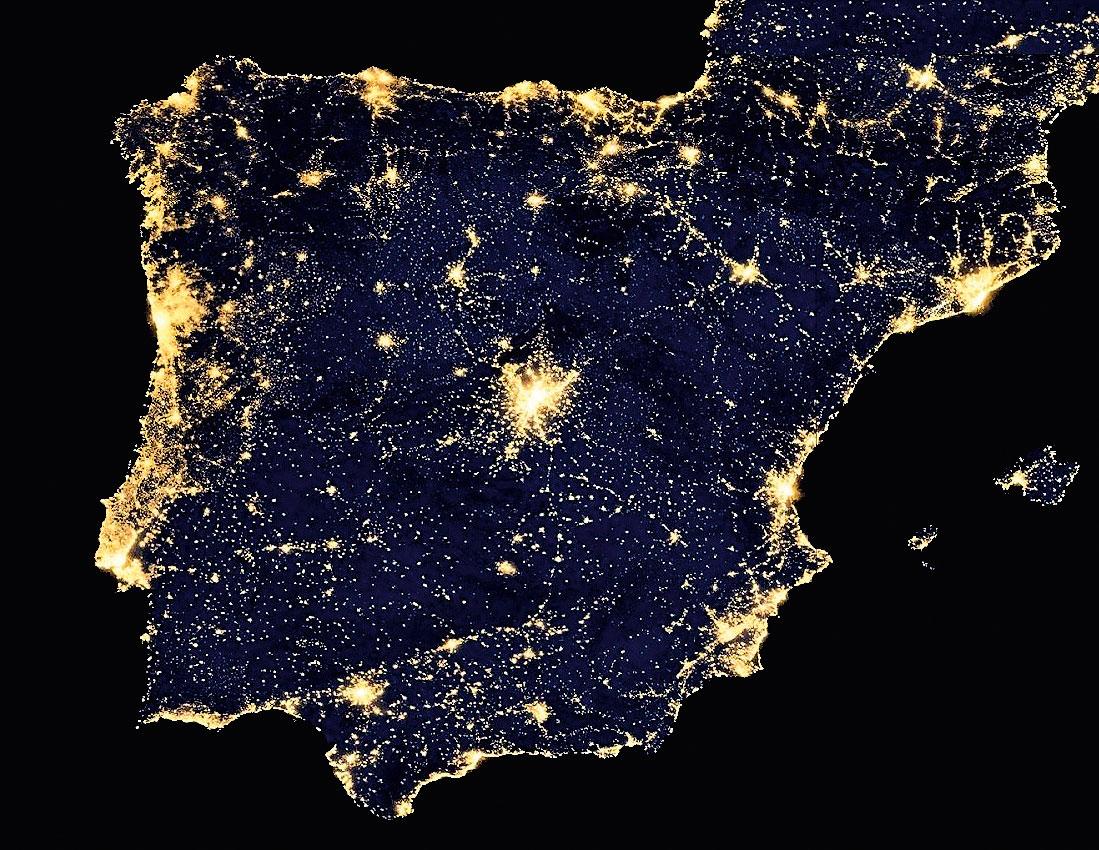
It may be a good idea to map out the country I call empty Spain. The first thing one notices is that it is a sealess country. Roughly it constitutes what is geographically the peninsular tableland plus the depression of the Ebro. By European standards it’s an enormous territory. Moreover, it has no cities. I have excluded Madrid, a black hole around which a huge void orbits. Spain’s population is unevenly distributed, concentrated at a few points and practically inexistent in most areas. Seen from outer space, the distribution would look like a doughnut with a piece of a bun at the center of the hole.
Western Europe is densely populated and its inhabitants are spread out with notable uniformity. Traveling by car in France, England, or Germany is to drive by an uninterrupted succession of homes and towns, whereas in Spain one goes from a few zones of mdium and high density to vast regions which are technically deserted.
The reasons for this peculiarity are complex. What I really wish to stress is that this is an ancient and structural imbalance that neither progress nor wealth has corrected, and that in many ways makes Spain an unusual country within European normalcy. Spanish people’s impression of their own landscape is more similar to the image that inhabitants of the United States and Russia have of their much larger countries. It’s said this or that county is the Spanish Siberia, and there are deserts that have served as locations for filming American westerns.
Two things come to the notice of Spaniards wheeling along French roads and into Belgian, German, Swiss, or Austrian ones. One is the landscape. It is a landscape that corresponds with the idea of European beauty that they, as children, were shown in fairy tales. The second surprise are the towns – their morphology and continuity. A French town, a Belgian one, a German one, and even a northern Italian one look like each other more than any of them can look like a Spanish town. No matter how small the town, it seems inhabited by children, young people, less-young people, and senior citizens. Even farmers can be young or middle-aged. Why are these two observations so surprising to the Spanish traveler? Because in Spain, small-scale farm life has altogether disappeared. The smaller the Spanish town, the harder it is to find anyone under 50 in it.
The morphology of the towns is also very different. North of the Pyrenees, everything looks much more orderly, homogeneous, and prosperous. We are separated from them by a historical gap. Centuries of neglect have made the Spanish countryside a scenery of small cluttered houses. This is partly due to the climate, to give relief from unbearable glare and heat, and partly, too, to secular poverty. The urbanism of the towns of inland Spain is centripetal, while the continental towns tend to be centrifugal. Streets twist in small labyrinths, in the manner of Arabian medinas, and the farmhouse forms a compact block, often surrounding a crag. It seems that their builders were worried about how to hold out during a siege. Spain differs from its neighbors in that, when rural decline intensified in the 1950s and 1960s, the Spanish countryside was already in a calamitous state. Germany, France, and the United Kingdom have tried to counter the decline, sometimes even succeeding, managing to keep part of the young population in the countryside and even luring city folk back there. But Spain has no program of the kind.
I am talking about Spain, but I always mean that country within the country that is empty Spain.
This text is taken from La España vacía. Viaje por un país que nunca fue, published by Turner (2016).





